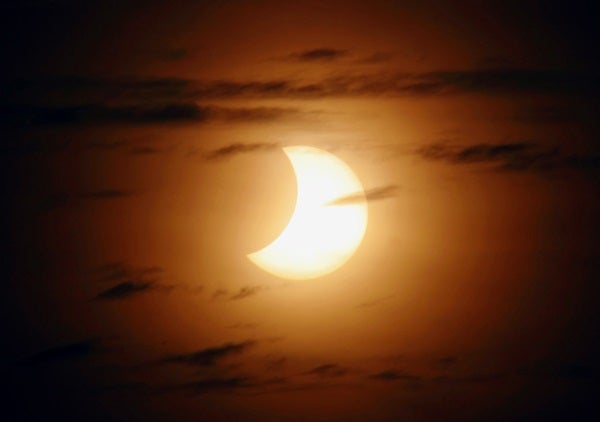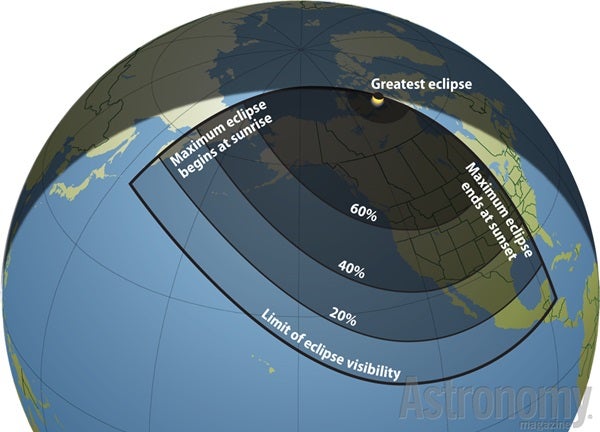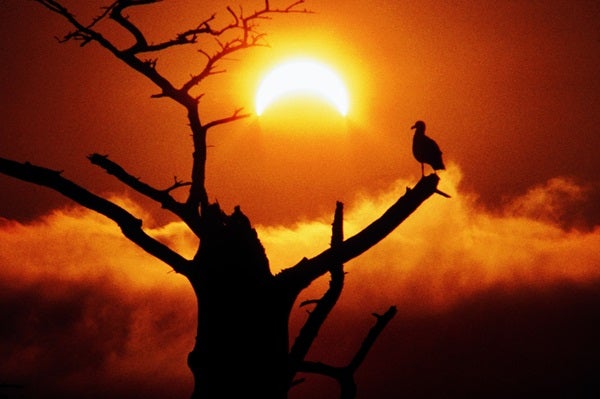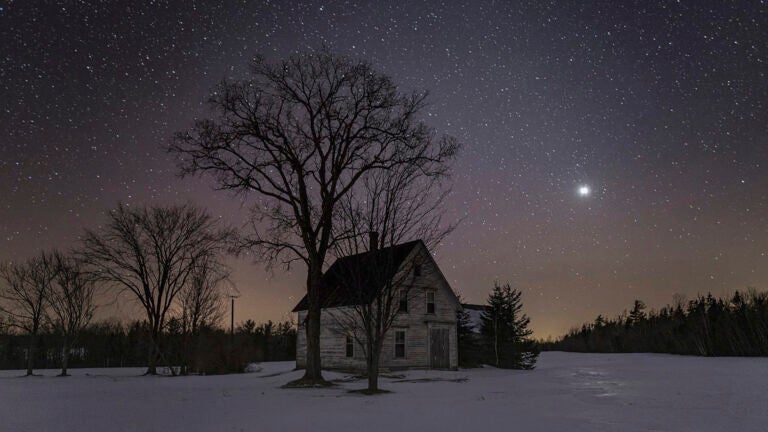Fifteen days after the Sun, Moon, and Earth align, they do so again — this time with the Moon in the middle. On October 23, our satellite casts its shadow onto most of North America and the eastern tip of Siberia. From Canada, Mexico, and the Lower 48, this partial solar eclipse occurs in the afternoon. Those in Alaska will see the earliest stages during late morning.
The entire eclipse plays out for those west of a line that runs along the border between Manitoba and Saskatchewan southward through the U.S. Great Plains to central Texas. (All of Mexico except for the Yucatán Peninsula also will enjoy the whole event.)
While western observers will enjoy more of the eclipse with the Sun higher in the sky, northern viewers will see the Moon take a bigger bite out of our star. People in Mexico will see Luna cover anywhere from a tiny sliver of the Sun up to about 40 percent of its diameter. The Moon blocks about 30 percent of the Sun along the Gulf Coast and more than twice that much in the favored regions of the northern United States and Canada. Greatest eclipse occurs in northern Canada in Nunavut Territory near Prince of Wales Island. From there, the Moon hides 81 percent of the Sun’s diameter from view.
Eclipse details for a representative sample of North American cities appear in the table at below. The times are all in local daylight time for the appropriate time zone, and a dash indicates that sunset occurs before the eclipse concludes. The Sun’s altitude and the percent of its diameter covered by the Moon are both for the moment of maximum eclipse.
| City | Eclipse begins | Maximum Eclipse | Eclipse Ends | Sun’s Altitude | Coverage |
| Anchorage, Alaska | 11:55 a.m. | 1:11 p.m. | 2:28 p.m. | 17° | 64% |
| Chicago, Illinois | 4:36 p.m. | 5:43 p.m. | —– | 2° | 55% |
| Dallas, Texas | 4:48 p.m. | 5:53 p.m. | —– | 10° | 41% |
| Denver, Colorado | 3:18 p.m. | 4:35 p.m. | 5:44 p.m. | 16° | 56% |
| Los Angeles, California | 2:08 p.m. | 3:28 p.m. | 4:40 p.m. | 29° | 45% |
| Mexico City | 5:32 p.m. | 6:09 p.m. | 6:44 p.m. | 13° | 12% |
| San Francisco, California | 1:52 p.m. | 3:15 p.m. | 4:32 p.m. | 31° | 50% |
| Seattle, Washington | 1:35 p.m. | 3:00 p.m. | 4:20 p.m. | 24° | 64% |
| Toronto, Ontario | 5:39 p.m. | 6:20 p.m. | —– | 0° | 44% |
| Vancouver, British Columbia | 1:32 p.m. | 2:57 p.m. | 4:16 p.m. | 24° | 66% |
| Winnipeg, Manitoba | 4:08 p.m. | 5:24 p.m. | —– | 8° | 69% |
You also can view the eclipse indirectly by projecting the Sun’s image. Make a simple pinhole camera out of two pieces of stiff white cardboard and a piece of aluminum foil. Cut a square hole in one piece of cardboard, and then tape the foil over the hole. Next, take a straight pin and poke a small hole in the center of the foil. To view the eclipse, let the Sun’s light pass through the pinhole and onto the second piece of cardboard, which serves as a screen. This technique works particularly well with a group of children because everyone stands with their backs to the Sun and avoids the temptation of staring at it.
You also can project the Sun’s image through a telescope. Use a 6-inch or smaller scope to avoid heat building up and a basic eyepiece with few optical elements. (The adhesives in some modern eyepieces can melt with extended solar viewing.) If all else fails — or you simply want company while you watch — consider visiting your local planetarium or science center. Most will be open during the eclipse, and the people will only be too happy to share the moment.












